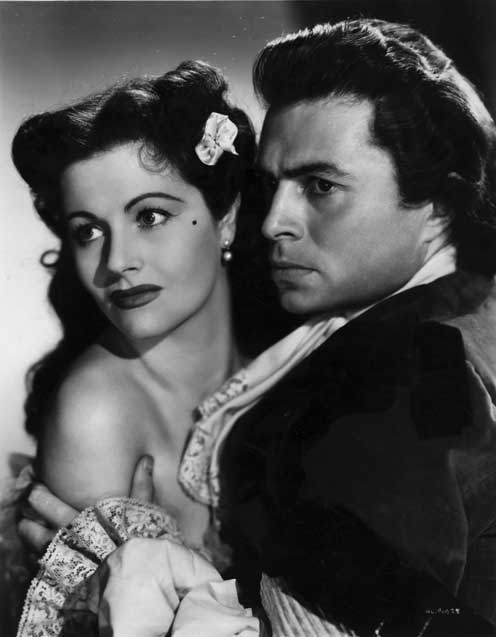
Starting in 1943 with The Man in Grey, Gainsborough Melodramas were commercial hits at the British Box office during the 40’s. They were produced by Gainsborough Pictures, a British film society that doesn’t exist anymore. The most successful one was The Wicked Lady. Among them, we can also find Fanny by Gaslight, Madonna of the Seven Moons, Jassy, Love Story, etc. These films are unfortunately not very popular these days, especially not outside England, probably due to the fact that they were successful in the UK, but not necessarily in other countries. Fortunately, people who love classic British films like me might have the chance to discover these unique films.

Today, I’m participating in the Criterion Blogathon, gracefully hosted by Criterion Blues, Speakeasy and, Silver Screening. Criterion has a brand named Eclipse. This one was created to allow us to have access to films that were harder to find. Just like The Criterion Collection, the Eclipse Collection allows us to visualize DVDs of superior quality, but these ones are more affordable. I might be wrong, but I think that all Eclipse DVDs are only available in box sets. Well, that leads me to my subject for this blogathon. It’s three films that are part of the Three Wicked Melodramas box set: The Man in Grey, The Wicked Lady, and Madonna of the Seven Moons. If you haven’t seen any of them, I hope my review will convince you to.

What is interesting with these films, is that they share similarities. But let’s first see what they are about:
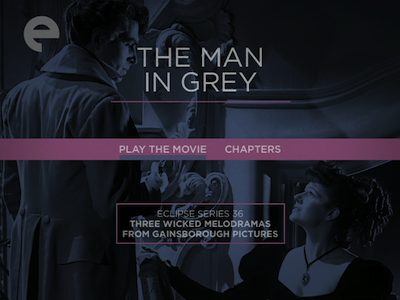
The Man in Grey (Leslie Arliss, 1943) starts in England during the Second World War. A WREN (Phyllis Calvert) and an RAF pilot (Stewart Granger) are attending an auction of the Rohan family possessions. When the pilot shares is questionable point of view about the family, the woman reveals to him that the last Rohan man was her brother. Confused, the RFA pilots apologizes and admits that his family is also connected to the Rohan.
This is just the prologue. The story really starts when we are brought in a long flashback taking place in England during the 19th century. At Miss Patchett’s school for young ladies, a new teacher arrives. She is Hesther (Margaret Lockwood), a young lady coming from a poor family. Hesther doesn’t seem happy to be there. She never laughs and doesn’t make friends. Not a long time after her arrival, Clarissa (Phyllis Calvert), a popular school girl, makes her entrance. She tries to make friend with Hesther, but this one is left cold. Clarissa finally succeeds, one afternoon, and the two ladies become friends. One day, a drama happens: Hesther runs away from the school with a lover. As she is a “disgrace”, her named is now forever banned from the institution. Clarissa, who can’t stand the fact of being in a place where she can’t name her friend’s name, decides to quit the school.
Later, Clarissa meets Lord Rohan (James Mason), known as “The Man in Grey”, in London, during a reception. Rohan is in need of a wife who can give him an heir. Clarissa, that he doesn’t love and who doesn’t love him, is his victim. She thinks the idea’s absurd, but they marry, despite that. One day, Clarissa goes to the theatre to see Shakespeare’s Othello. On the road, the carriage is stopped by a mysterious man (Stewart Granger). Clarissa thinks he his a thief, but he only needs a to be taken someplace. So, feeling she hasn’t much choice, Clarissa allows him to take place in the carriage. Arrived at his destination, the man kisses her an goes away. During the viewing of the play, Clarissa recognizes the man (Granger) in the role of Othello and Hesther in Desdemonda’s role.
Clarissa is glad to have found her friend back. This one told her that she had a miserable time since she left school. Clarissa, who is ready to take care of her, takes her home. There, Hesther meets Lord Rohan and they fall in love with each other. Later, during a carnival, Clarissa meets the man from the carriage again. His name is Rockeby. They both fall in love with each other. These two love affairs won’t be easy to live, especially when Hesther’s true nature is revealed…

The Wicked Lady (Leslie Arliss, 1945) takes place in England, during the 17th century. Caroline (Patricia Roc) and Sir Ralph Skelton (Griffith Jones) are engaged. Caroline’s friend, Barbara Worth (Margaret Lockwood) is invited to the wedding as the maid of honour. When she meets Ralph, interested by his money, she decides to seduce him. This is easy and the result is a marriage between Barbara and Ralph, instead of Caroline and Ralph. This one thinks he loves Barbara, but she has only decided to marry him for his money and her own entertainment.
Soon, Barbara discovers that life with Ralph is too boring for her. So, one night, she discovers a new “activity”: steal carriages possessions, with the “hold-up method”. So, wearing a mask, she becomes a bandit at night. It’s during one of these illegal escapades that she meets Captain Jerry Jackson (James Mason) a notorious highwayman. They decide to form a team and have a love affair. However, Barbara wouldn’t hesitate to take her revenge once he’ll disappoint her. As a matter of fact, the only man Barbara really falls in love with is Kit (Michael Rennie), whom she meets at her wedding.
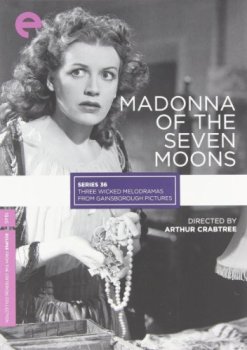
Madonna of the Seven Moons (Arthur Crabtree, 1945) is different from the first twos as it takes place in Italy during the 20th century. The film starts on Maddalena (Phyllis Calvert)’s young years. She is a student in a Catholic convent. One day, while she is picking flowers, she is followed by a strange man. Scared, she runs and we don’t see what happens. When she’s back at the convent, she cries and we guess she might have been raped. Not a long time after, the time comes for her to leave the convent. The reverend mother gives her a prayer-book as a goodbye gift.
Years later, Maddalena is happily married to Giuseppe Labardi (John Stuart). They live in a beautiful mansion not far from Florence. They are often visited by their friend Doctor Charles Ackroyd (Reginald Tate). Her daughter, Angela (Patricia Roc), that she hasn’t seen for five years, is about to be back home. Maddalena is very worried that something might happen to her on the road. Angela is back with her boyfriend, Evelyn (Alan Haines), who stays to his friends’ place: Jimmy (Petter Murray-Hill), a painter, and his wife Nesta (Dulcie Gray). Caroline is very happy to see her mum, but she notices that this one is very prude, so she decides to take care of this by buying her some new clothes. Maddalena sometimes behaves strangely and Giuseppe explains to his daughter that her mother has been sick during her absence.
One night, after having a blackout during a party, Maddalena runs away from home. She arrives in Florence and goes to The House of the Seven Moons. There, she is a completely different woman. She has a lover, Nino (Stewart Granger), the head of a gang of jewel thieves, and she isn’t Maddalena anymore, but Rosanna. Maddalena lives a double life. When she is Maddalena, she doesn’t remember having been Rosanna and vice versa. On their side, Carolina, Giuseppe, and other Maddalena’s relatives will do everything they can to find her.
Now, I’ve decided to discuss these films not separately, but as a whole. Remember, I told you Gainsborough melodramas share a lot of similarities.
The actors and their characters
Margaret Lockwood: Margaret Lockwood was the most popular British actress of the 40’s. She certainly was the Queen of Gainsborough melodramas. The actress was part of The Man in Grey and The Wicked Lady. In both cases, she plays a very bad woman. I’m often asking myself which one is the worst: Hesther or Barbara Skelton? It’s hard to answer. However, I think Barbara is the most interesting character. Why? Because she represents the modern post-World War II woman. You see, during the war, married women started working as their husband were on the front. They became more independent economically, but also sexually. Barbara embodies this last element through her relationship with Jerry Jackson. She might be a wicked woman, but she also is a strong and clever one, and this side of her can be a model for us, ladies, but not the other one! Margaret Lockwood is one of my absolute favourite actresses. Even if she plays two evil women, both characters are, in a way very different, which proves her versatility. Hesther is much more “discrete” and Barbara is much more expressive. For those who know Mrs. Lockwood’s work, you might have noticed that she knew how to play comedy as well. Give Us the Moon would be a good example.
James Mason: This excellent actor plays two mysterious men in The Man in Grey and The Wicked Lady. His character in The Man in Grey is kind of odious. We do not really sympathize with him. James Mason succeeded in his duty of making Lord Rohan a despicable man. Jerry Jackson is different. He’s far from being a good man, but he enjoys life much more and knows how to express himself. He has a certain sense of humour, and, unlike Rohan, laughs once in a while. James Mason’s character in The Wicked Lady is much richer than the one in The Man in Grey.
Phyllis Calvert: Being part of The Man in Grey and Madonna of the Seven Moons, the lovely Phyllis Calvert stars in those films as the sweet and innocent lady. Well, concerning Madonna of the Seven Moons, that’s only the case when she is Maddalena. As Rosanna, she is much wilder. This film proves her great acting abilities since Maddalena and Rosanna are two very different persons sharing the same body. Her performance in this film is kind of fascinating, a real tour de force. If you’re not too familiar with this actress, it’s with pleasure, I’m sure, that you’ll discover her. It’s impossible not to like her. She became a favourite of mine immediately after I saw her in The Man in Grey.
Stewart Granger: Just like Phyllis Calvert, I was introduced to Stewart Granger with The Man in Grey. Before that, I didn’t know what kind of actor he was. The only thing I knew about him is that he was Jean Simmons’ first husband. I absolutely loved him is The Man in Grey and he became a favourite of mine as well. In this film and Madonna of the Seven Moons, Stewart Grangers plays a rather exotic man. He’s not the proper English (or Italian) gentleman with a tie and a black jacket, but the wild one, with a taste for adventure.
Patricia Roc: The pretty Patricia Roc is the sweet and naive girl in The Wicked Lady and the modern young girl in Madonna of the Seven Moons. In both cases, her performance grabs our attention. Patricia Roc is unfortunately not a very well-known actress, but she deserves to be discovered. The girl had talent, and her performance in both films is very touching. She is one of the actresses I’m the most curious about.
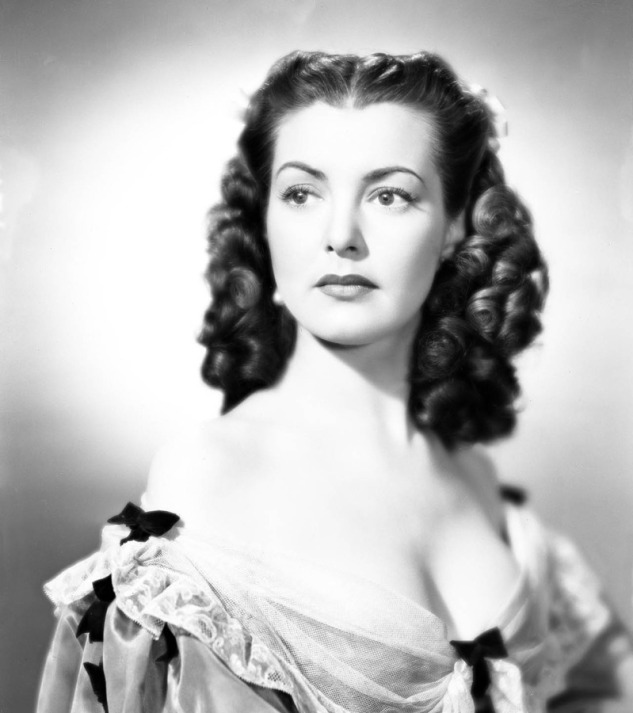
These are the “major” actors of those three films. I won’t talk about them all, because there are too many, but here are some honourable mentions: Jean Kent, Micheal Rennie, Griffith Jones, Dulcie Gray, Martita Hunt, Helen Haye, etc.
The reception
The Gainsborough Melodramas, without any exception, were all box office hits in the UK. What made these films so popular in this country? They are not often cited as masterpieces, which makes them somehow underrated. Those films were made on a smaller budget than Hollywood films but were able to show us something brilliant. The most successful of the three, The Wicked Lady, was unfortunately not well received in the USA and was severely censored by the Production Code due to its use of themes such as adultery, violence, rape, etc. Some scenes had to be re-shot for the American release. The Wicked Lady also provoked a scandal in the UK on its release, but not as much as in the United States. We guess the English were more tolerant. The Mother Queen liked it, which was a good thing.

The costumes
That’s something I always notice in the Gainsborough Melodramas: the beautiful costumes. The Man in Grey and The Wicked Lady allows us to see historical costumes. Concerning The Man in Grey, the 19th century has always been one of my favourite historical period presented on screen, especially for the costumes. Just think about Gone with the Wind! In Madonna of the Seven Moons, the costumes are more “modern” as it takes place during the 20th century. But, they are also so refined! Strangely, I couldn’t find any information about the costume designers for these films. Well, here are some pictures to make you realized how gorgeous they are.
The themes:
You’ll find a lot of common themes in The Man in Grey, The Wicked Lady, and Madonna of the Seven Moons. One of them is the wedding. Most of the time, it’s an unhappy one, if you take the example of Ralph and Barbara. Or a wedding that has to face challenges, if you consider what happens to Maddalena in Madonna of the Seven Moons.

These three films, without exception, are known for using the controversial themes of sexuality and adultery. This last one is twice used in The Man in Grey by Clarissa’s love affair with Rockeby and Hesther’s one with Clarissa’s husband, Lord Rohan. In The Wicked Lady, Barbara commits adultery by having an affair with Jerry Jackson. In Madonna of the Seven Moons, the use of adultery is arguable. Sure, in a way, Maddalena commits adultery once she joins Nino, but she isn’t conscious of what she’s doing. The sexuality is also used in the three films. Madonna of the Seven Moons is known as a “psychosexual drama”. There’s indeed something very Freudian about this film. Maddalena’s strange behaviour is certainly due to a trauma: probably this episode when she was raped as a young girl, but this is never mentioned in the film. So, we don’t know if she remembers it.
Finally, the violence is another theme used in these films. Without revealing it, The Man in Grey‘s end uses this theme in quite a horrible way. Some characters in these films haven’t got any pity. Barbara Skelton won’t hesitate to use a gun once she’ll need it, but this will lead her to a fatal faith. The violence in Madonna of the Seven Moons is less obvious, but it’s there. It would majorly be embodied by Nino, who has a hot temper.

The cinematography:
The Man in Grey and The Wicked Lady, but especially The Wicked Lady, have the particularity of using a visual aesthetic that can make us think of the one in American Films Noir (that were also at their golden age in the 40’s). It’s the use of shadows and contrasts that allows us to make this comparison. I’ve always thought that The Wicked Lady could be classified as a kind of Film Noir. It’s not one, but it shares a lot of similarities. Barbara Skelton would certainly be the femme fatale. The woman in this film also has the same sort of function. Well, if it’s not a Film noir, it could be categorized in a sub-category of this genre, just like western-Noirs or science-fiction-Noirs are. The cinematography in Madonna of the Seven Moons is more luminous. Unlike in The Wicked Lady, the major action takes place during daytime. There’s also something very poetic in the set of this film. Maybe because it takes place in Italy. *Sigh*…
Finally, the screenplay:
The Man in Grey, The Wicked Lady, and Madonna of the Seven Moons were all based on a novel: The Man in Grey by Eleanor Smith; The Life and Death of the Wicked Lady Skelton by Magdalen King-Hall and The Madonna of the Seven Moons by Margery Lawrence. The last ones were themselves based on real-life stories. The highest quality of these screenplays is the evolution of the characters. As a matter of fact, the most interesting ones are those interpreted by Margaret Lockwood: Hesther and Barbara Skelton. They might be mean women, but to see how they are developed in the story is fascinating enough, especially for Hesther. Except that, The stories are entertaining and thrilling. We wonder impatiently for what will happen in the end, because, sometimes, it’s hard to say if problems will be solved or not.
There would be much more to say about these films. We are lucky Eclipse added them to its collection, so it can allow the curious to watch them. I’ve always been a fan of Gainsborough Melodramas. They are not perfect, but they certainly have something to tell us. They are interesting, entertaining, brilliant and often regroup a bunch of talented British actors. Of the three I’ve talked about in this text, you might wonder which one is my favourite. Well, it’s The Wicked Lady. The other ones are great as well, but The Wicked Lady has something special. If you haven’t seen any Gainsborough Melodramas, that’s the one I’ll start with if I were you.
I finally want to thank Criterion Blues, Speakeasy and Silver Screening for hosting such a nice event! It was a pleasure for me to revisit my Three Wicked Melodramas DVD box set.
I invite you to read the other lovely entries as well:

I’ll leave you with the Gainsborough Pictures logo, which I just adore:
See you soon!







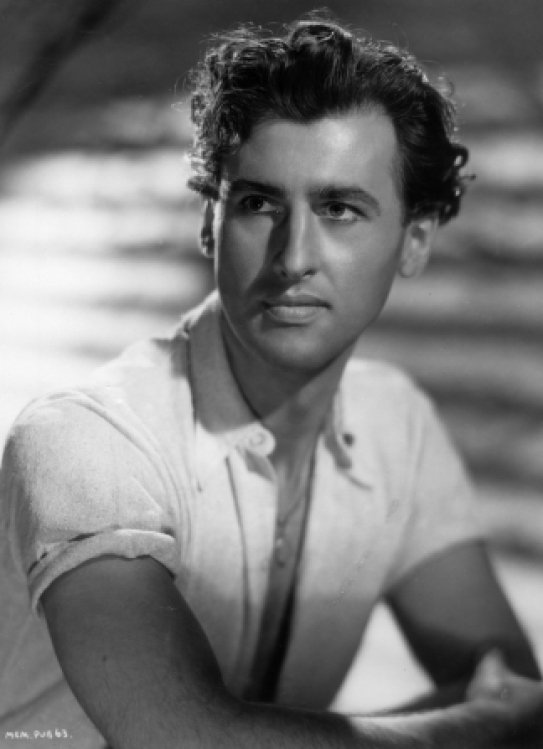
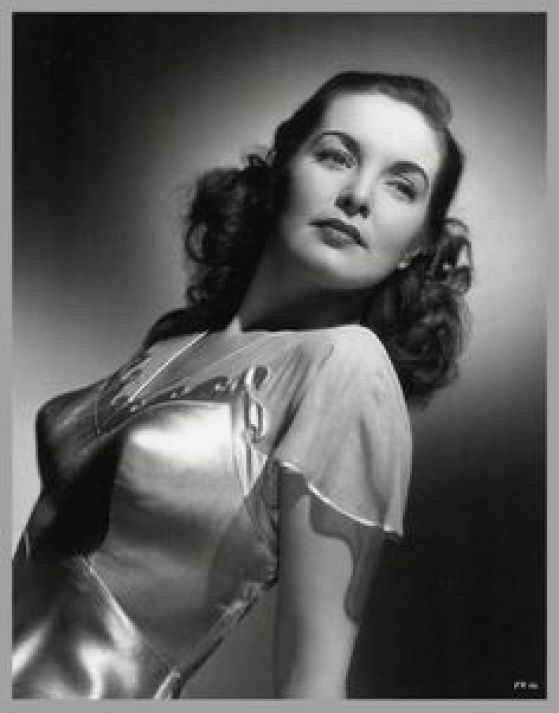









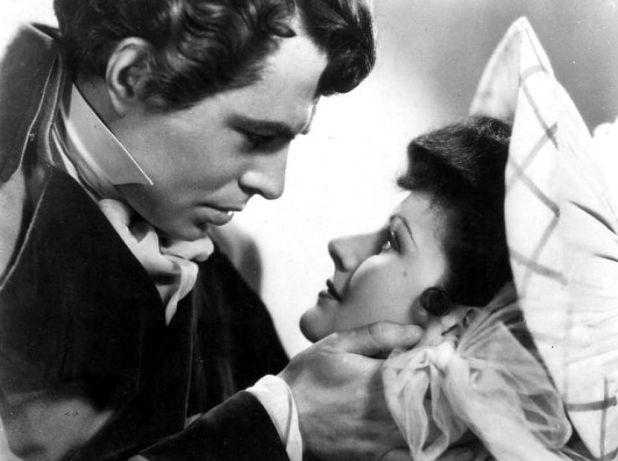




![maningrey42_thumb[1] maningrey42_thumb[1]](https://thewonderfulworldofcinema.files.wordpress.com/2015/11/maningrey42_thumb1.jpg?w=590&resize=590%2C455&h=455#038;h=455)


Virginie, I don’t know if Criterion is paying you commission, but they should. I’ve heard of these films but have made them a low priority for viewing. However, now that I’ve read your post, I CAN’T WAIT to see these! They look fantastic – the cast, the costumes, the scripts… Where have these movies been all my life? Sheesh!
I liked how you tied the three films together with their common themes. It sounds like a truly complementary set, which is what Criterion had in mind, I’m sure.
Thanks for joining the blogathon with this goregous box set. 🙂
LikeLiked by 1 person
Welcome! 🙂 Thanks for your kind comment, I hope you’ll get to see these soon!
LikeLiked by 1 person
HI Virginie, this is an Eclipse set I own, but for whatever reason I have not gotten around to it. They sound fascinating. I do like a lot of British films, like the Ealing films that followed and then the social realism pictures. From your descriptions, there may be just a little in common with these, but I’m curious. They sound somewhat like Hollywood Pre-Code films, a little …. how do I put it? … steamy, saucy? Either way I’m very curious and will give these a look soon.
Thanks for contributing to and supporting the Blogathon!
LikeLiked by 1 person
I know what you mean by your comparison with Pre-Code films. Somehow, it’s different, but yeah according to the “concept” it can be compared.
LikeLiked by 1 person
Just recently rewatched Wicked Lady, so great. You do a nice job her outlining the era and the people involved in these– good movies that deserve the attention and I know you’ll be encouraging a lot of people to check them out. Thanks for joining our blogathon!
LikeLiked by 1 person
Thanks for hosting it! A great fun 🙂
LikeLike
One night a couple of cold winters ago, I was suffering from some insomnia and laid on the sofa expecting the first one to carry me off to Slumber Town. Instead, I sat up all night watching all three of them back-to-back-to-back. I would have never thought this genre was “my thing,” but something struck that evening/night/morning and I was transfixed by all three. I love the way you grouped all three together as you described them. This is definitely a cohesive box set and that came across very well in your thoughts. Nice work!
LikeLiked by 1 person
Thanks Keith! 😀
LikeLike
[…] The Wonderful World of Cinema – Three Wicked Melodramas […]
LikeLiked by 1 person
Thank, Virginie, one of your best!! Such great analysis, background info and detail. was all new to me so was a great leaning experience.
LikeLiked by 1 person
Thanks Mike! Glad you enjoyed it!
LikeLike
There’s a whole world of British cinema that I wouldn’t even know about if it weren’t for these Criterion releases. Thanks for the review.
LikeLiked by 1 person
[…] Criterion Blogathon : Three Wicked Melodramas […]
LikeLike
Thank you for this blog. Just one thing I noticed: Patricia Roc was actually very well known in her time and – at least in Britain – was the most popular British actress after Margaret Lockwood in her heyday. I actually prefer her to Margaret Lockwood and I always thought it was a shame she never got the more demanding roles and the variety that she was definitely capable of.
One other thing that is worth noting in these films is the exquisite diction of all the actors. You won’t miss a word, which is something sadly missing in today’s films.
LikeLiked by 1 person
It’s so true! That’s why I understand British films so well ahah
LikeLike
[…] Man in Grey and The Wicked Lady are certainly among the best-known and simply best Gainsborough Melodramas. Set in the historical past, they revolve around similar themes, such as love, adultery, crime and […]
LikeLike